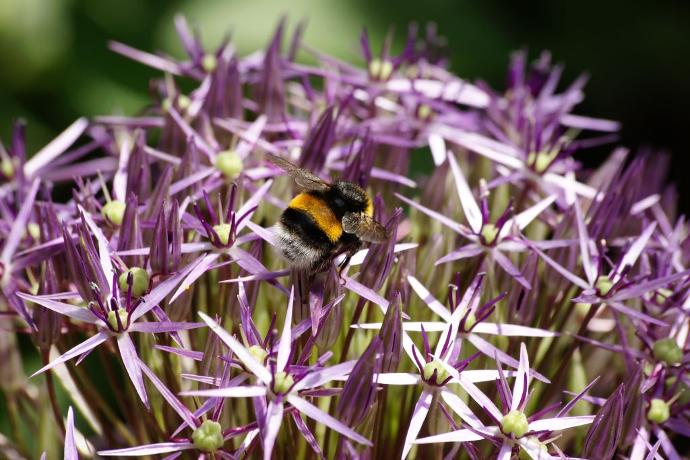Flower bulbs for bees: Make your garden bee-friendly
The first warm rays of spring sunshine are the cue for bees and bumblebees to wake up from their hibernation. These industrious insects then immediately start looking for food. With the right bulbs in your garden, you can make sure bees and bumblebees will find the nectar and pollen they so desperately need early in the year. At Natural Bulbs, we understand the importance of a bee-friendly garden and would love to help you make the right choices. In this blog, we discuss which flower bulbs are the best for bees and how to turn your garden into a paradise for these dear little friends.
Why flower bulbs for bees?
Bees and bumblebees play a crucial role in pollinating flowers, which is essential for biodiversity and fruit and vegetable production. By planting bee-friendly bulbs, you are contributing to the preservation of bee populations and giving nature a helping hand. What's more, these flowers make for a colourful and vibrant garden, which you yourself can also enjoy.
Which flower bulbs are recommended?
Not all flower bulbs are equally attractive to bees and bumblebees. The best choice are bulbs that produce a lot of nectar and pollen and whose flowers are open and easily accessible. Here are some standouts that will turn your garden into a bee magnet:
- Crocuses (Crocus)
Crocuses are one of the earliest blooming flowers and are a valuable food source for bees in early spring. Plant them in groups for a beautiful display of colour. - Grape hyacinth (Muscari)
Grape hyacinth, with its cluster-shaped blue flowers, is a favourite among bees. They bloom a little later in spring and will add a splash of colour to your garden. - Ornamental onion (Allium)
Ornamental onions, such as Allium Purple Sensation and Allium Sphaerocephalon, have large, bulbous flowers where the bees can find an abundance of nectar and pollen. - Siberian squill (Scilla)
Siberian squills bloom in a beautiful blue or white colour and are easy to care for. They naturalise quickly, providing a food source for various pollinators every year. - Botanical Tulip (Tulipa)
Botanical tulips tend to be smaller and have open flowers that bees can easily get to. They bloom in various bright colours and are a beautiful addition to any garden.
How to plant bee-friendly flower bulbs?
Planting bee-friendly bulbs is easy, but there are some tips to get the most out of your efforts:
Choose the right place
Bees like sunny spots, so plant your bulbs in a location where they'll get plenty of sun. Some bulbs also do well in light shade, but make sure they get at least half a days' sun.
Planting depth and distance
Plant the bulbs two to three times deeper than their height. Make sure there is enough distance between the bulbs, so they have room to grow and propagate, but don't plant them too far apart either. By creating flowery places, bees won't have to use as much energy to fly from flower to flower.
Ground preparation
Bees love healthy flowers and plants, so make sure the soil is permeable. Add compost or organic material to improve soil structure and provide the bulbs with sufficient nutrients.
Watering
Water the bulbs well after planting. Keep watering during dry periods, especially in spring when the flowers start to grow.
 A year of happy bees
A year of happy bees
To provide food for bees all year round, it is important to plant flowers with different flowering times. Combine early bloomers such as crocuses with later varieties such as the ornamental onion. This way, you make sure there is always something in bloom in your garden.
We also have a special category with flower bulbs for bees, check them out here!
At Natural Bulbs, we trust in the power of organic bulbs to support nature. By choosing organically grown bulbs, you will avoid harmful pesticides and help bees and other insects to flourish. Start creating a bee-friendly garden today and enjoy the colourful flowers and happy buzzing of contented bees.


